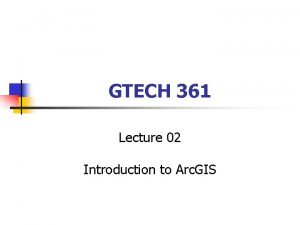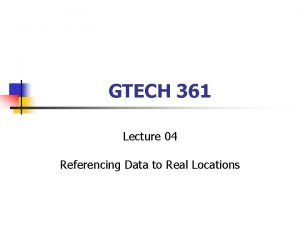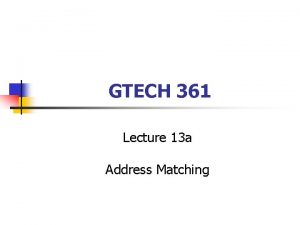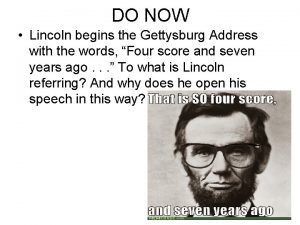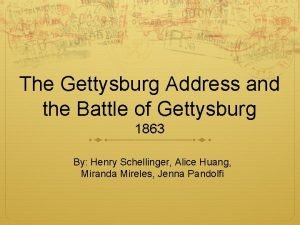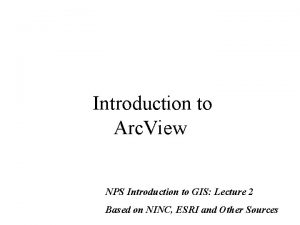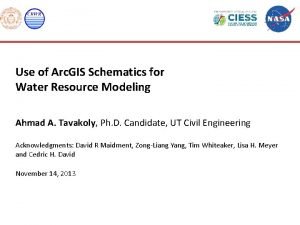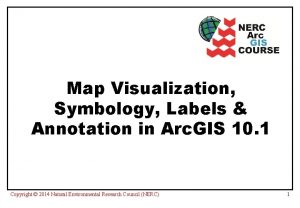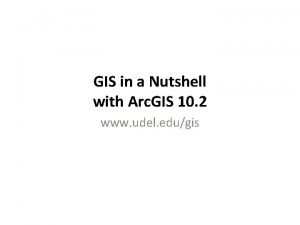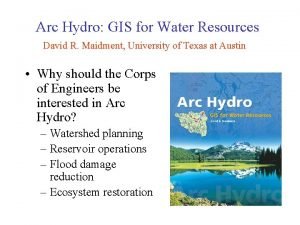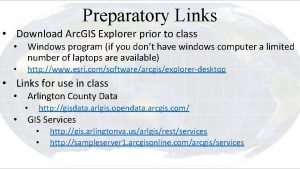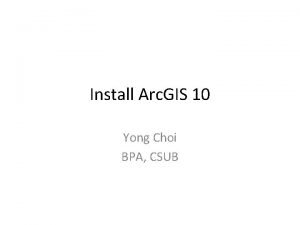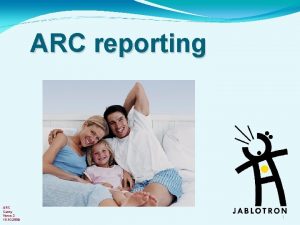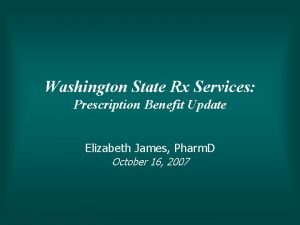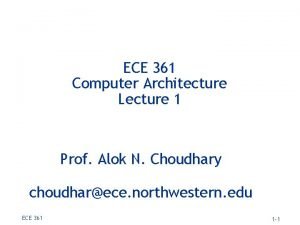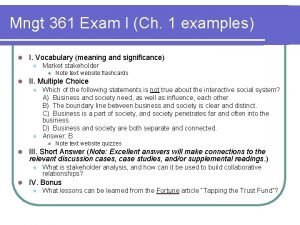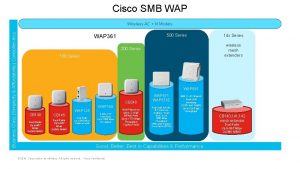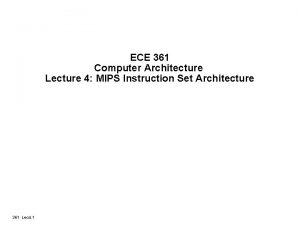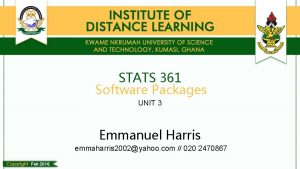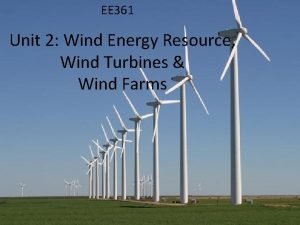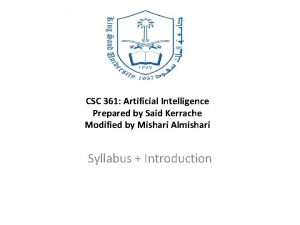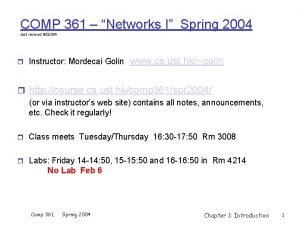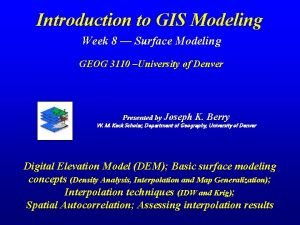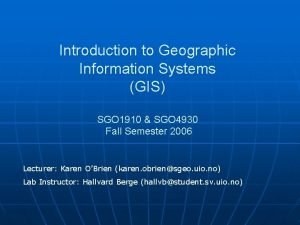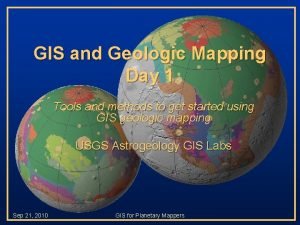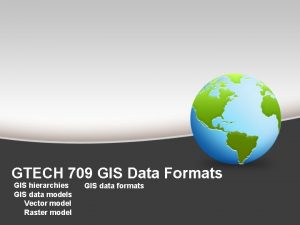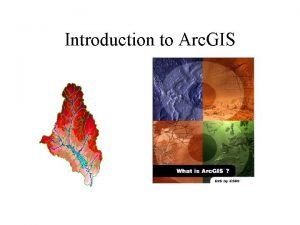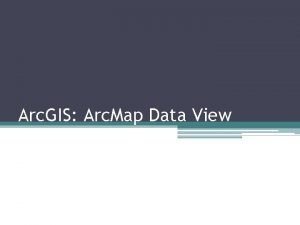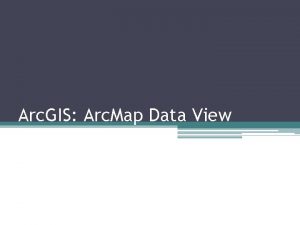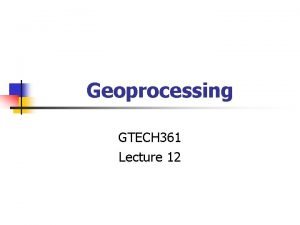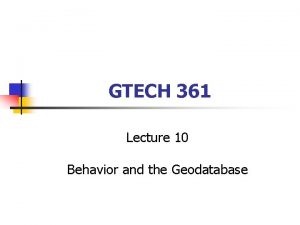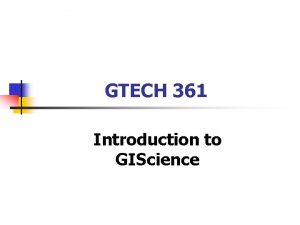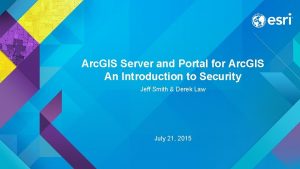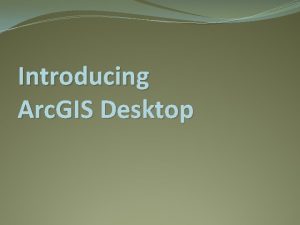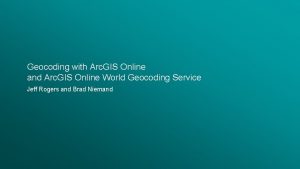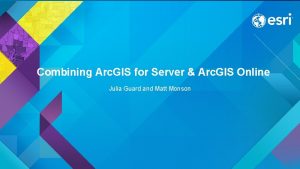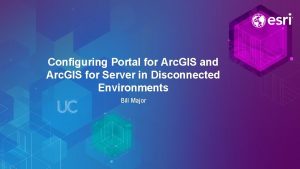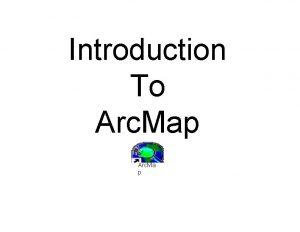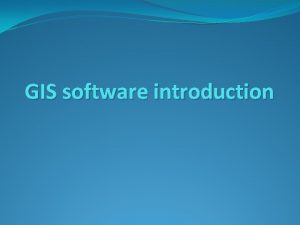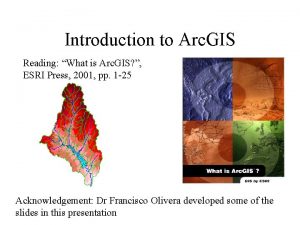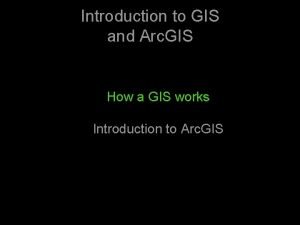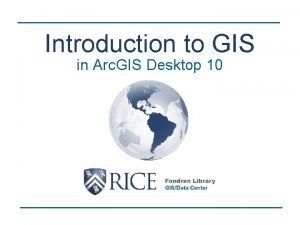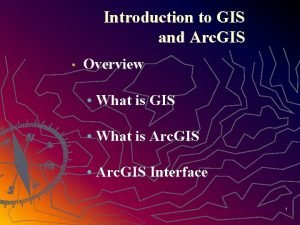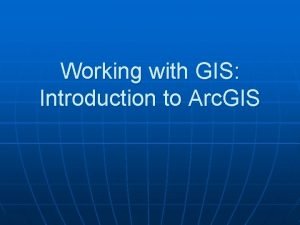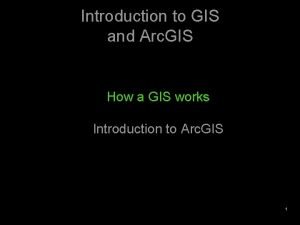GTECH 361 Lecture 02 Introduction to Arc GIS

































- Slides: 33

GTECH 361 Lecture 02 Introduction to Arc. GIS

Today’s Objectives n n n n n explore a map and get information about map features preview geographic data and metadata add data to a map describe the structure of a map explain how a GIS represents real-world objects change the way features are drawn on a map access feature information in different ways describe spatial relationships of map features describe how GIS can be used to solve problems

GIS Map Organization

Representation n Point, line, and polygon features

Geo-Relational Principle 1

Geo-Relational Principle 2

Scale

The Arc. GIS Suite

System Architecture

Arc. Map

Map Production

Arc. Catalog

Arc. Catalog Views

Arc. Toolbox

Metadata

Metadata in Arc. GIS

Help

GIS Data Formats


Maneuvering Arc. GIS

Connecting to Folders

Table of Contents

Exploring a Map

Making Appearances

Making Appearances part 2

Localized Information

Spatial Relationships 1 n Distance Which countries contain a lake completely within their borders? Which cities are located within 25 kilometers of a river?

Spatial Relationships 2 n Intersection Which countries have a river that intersects their border?

Spatial Relationships 3 n Adjacency Which countries share a border with Russia?

Spatial Relationships 4 n Containment Which countries contain a lake completely within their borders?

GIS as a Process 1 1. Capture data 2. Store data 3. Query data 4. Analyze data 5. Display data 6. Present data

GIS as a Process 2 1. 2. 3. 4. 5. Ask a geographic question Acquire geographic data Explore geographic data Analyze geographic information Act on geographic knowledge

Summary n n n A GIS organizes and stores information about the world as a collection of thematic layers. Each layer contains features with the same shape and attributes, all located within a common geographic area. Each feature is assigned a unique numerical identifier and is characterized by a unique location in space and a corresponding record in a table. Features can be stored in a GIS as three primary shapes: points, lines, or polygons. Features have spatial relationships with other features, and with a GIS you can find features based on their spatial relationships. The geographic inquiry process provides a framework for solving problems with GIS.
 Gtech gis
Gtech gis Utm projection
Utm projection Gtech address
Gtech address Gettysburg gtech
Gettysburg gtech Gtech mmu
Gtech mmu What battle was the turning point of the civil war
What battle was the turning point of the civil war Arc view gis
Arc view gis Arc gis
Arc gis Arc gis map
Arc gis map Gis
Gis Arc hydro gis for water resources
Arc hydro gis for water resources Arc gis
Arc gis Arc gis explorer
Arc gis explorer Arc gis 10
Arc gis 10 Arc promoteur vs arc investigateur
Arc promoteur vs arc investigateur Minor arc and major arc
Minor arc and major arc Major arcs of a circle
Major arcs of a circle Arc emu88 com arc info 47 100047 html
Arc emu88 com arc info 47 100047 html 888-361-1611
888-361-1611 Ece 361
Ece 361 Mngt meaning
Mngt meaning Smbse cisco training
Smbse cisco training Ece 361
Ece 361 Stats 361
Stats 361 Hymn 361
Hymn 361 Ee 361
Ee 361 Ece 361
Ece 361 Csc 361
Csc 361 Comp 361
Comp 361 01:640:244 lecture notes - lecture 15: plat, idah, farad
01:640:244 lecture notes - lecture 15: plat, idah, farad Introduction to gis
Introduction to gis Introduction to gis
Introduction to gis Introduction to gis
Introduction to gis Arc welding introduction
Arc welding introduction
